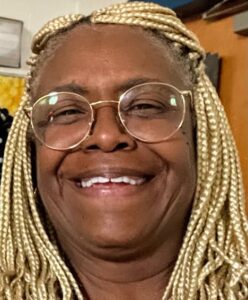Why anti-racist literacy practices are necessary
Over the summer, I participated in a course from Student Achievement Partners called Putting Anti-Racist Literacy Instruction Into Practice. This course highlighted a need to incorporate teachers’ voices and students’ identities when selecting classroom texts. But in many states, educators are limited in what they can teach and say in the classroom. In Florida, for example, the governor has censored math books and reading materials that may allude to critical race theory.
For me, the course was awesome because it made me take a closer look at the literature the education system forces our students to read. One highlight from the course was learning about the four core principles from #DisruptTexts:
- Continuously interrogate our own biases and how they inform our thinking.
- Center Black, Indigenous, and voices of color in literature.
- Apply a critical literacy lens to our teaching practices.
- Work in community with other antiracist educators, especially Black, Indigenous, and other educators of color.
The third principle resonates with me most. In reading that we should “apply a critical literacy lens to our teaching practices,” the first thing that came to mind was the struggling readers I work with on a daily basis. Reading materials are limited when you are looking for books that are multicultural, and students who struggle to read need to see children who look like them because it helps keep them engaged.
I work in a Title 1 school, and the books that come to us are not vetted by teachers. The books are ordered by a separate department. It is painfully evident that the books are chosen because “we need” to have multicultural books in schools. The problem, however, is that some of them will never be read by students because they are not engaging. Nor do they accurately reflect the issues children of color face on a daily basis. Our students are clueless about the books authored by African-American authors that truly address their day-to-day realities because most educators are “picking” books and making assumptions. In truth, there is no real-world lens that gets applied to the selection of texts. This realization is what made this course so powerful for me.
The anti-racist movement is shining a necessary and important light on what we must address in literacy instruction. I’ll give an example: our school bought a series of books that included Amazing Grace, by Mary Hoffman and Caroline Binch, which featured an African-American main character. I discovered that there were boxes of Amazing Grace sitting in the media center rather than on library shelves or in classrooms. Instead, books featuring white main characters were readily available for our predominately African-American students to read. This experience only highlighted our need for a stronger focus on anti-racist literacy instruction.
It also highlighted the fact that politics are real in this game of education. I have witnessed African-Americans who keep their voices silent when it comes to supporting African-American authors. Black History Month is slowly being excluded under the auspices of getting ready for “state assessments.” If we are going to allow this to happen in the 21st century, how will our students know their history? If African-American students are to know themselves and the truth about their history, inequitable literacy practices cannot go unaddressed. To make equitable literacy instruction a reality, educators must demand to be at the table when books are chosen. We must be trained to “apply a critical literacy lens to our teaching practices.”
Because of Putting Anti-Racist Literacy Instruction Into Practice, a fire was again ignited within me. This training is not about bashing other races; it’s about making sure our students are being fully represented in the literature. It’s a way to bring light to a problem that continues to be buried and continues to keep our African-American students unaware of their rich histories and contributions to our country, our literature, and our education.





